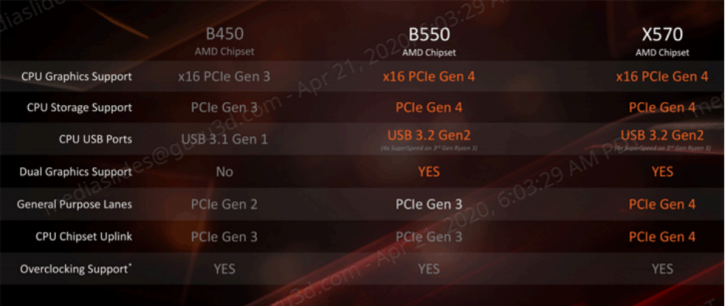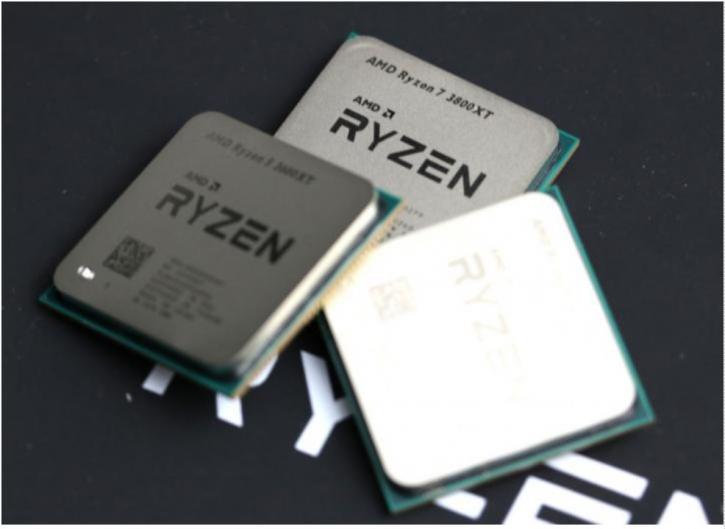The Ryzen 5000 processors for desktop
The Ryzen 5000 processors for desktop
AMD validated that the ZEN3 (internal codename Vermeer) based processors are called the Ryzen 5000 series. And that brings the Mobile APU and Desktop lineup in the same numbering. This will clarify the confusion between mobile parts and desktops and get that numbering in line with the motherboard chipsets from an identifiable point of view (Series 500). AMD has now explained this itself for the codename Vermeer products. AMD announced the processors are based on the Zen 3 architecture and, like the CPUs based on Zen 2, are fabbed at 7nm. Of course, ZEN3 will find its way through the entire AMD family of products, from top to bottom mobile, desktop, but in autumn 2021, we also expect ZEN3 based Threradripper SKUs. You have to begin somewhere, and initially released are:
- Ryzen 5 5600X (6c/12t)
- Ryzen 7 5800X (8c/16t)
- Ryzen 9 5900X (12c/24t)
- Ryzen 9 5950X (16c/32t)
|
|||||||||||||||||||||||||||||||||||||||||||||||||||||||||||||||||||||||||||||||||||||||||||||||||||||||||||||||||||||||
A unified 8-core design
We explained that the solution for that increased gaming performance was twofold; I already explained the first. A second solution to bypass any performance degradation in gaming is to eliminate inter-core and inter CCX latencies. ZEN2 addressed that, to some extent, with a few efficiency solutions to be found at cache levels. However, of course, getting rid of the inter-core complex partition latencies is another thing. ZEN3 stepped away from that two-core complex (CCX) of 4 cores per die (CCD). The architecture is now a single core complex of 8 cores per die (CCD), and that is an easy win in latency as all cores can access the same L3 cache.
Chipset compatibility
ZEN3 based Ryzen 5000 series processors will be drop-in compatible with the Series 500 chipset motherboard like the B550 and X570 (you'll need the latest available BIOS, of course). There will also be Series 400 chipset support for motherboards that have a 32MB BIOS. In short, for Ryzen 4000, aka ZEN3 processors that are released, it is recommended to have a B550 or X570 motherboard. With motherboards like B550 and X570, you are guaranteed to get optimal support for Zen 3 processors when they get released. Much like before, support will be added through firmware updates that motherboard manufacturers will make available and already made available by many manufacturers. Please check their website for BIOS updates. Initially, AMD had no plans to introduce "Zen 3" architecture support for older chipsets. While they wish could enable full support for every processor on every chipset, the flash memory chips that store BIOS settings and support have capacity limitations. So on the Series 400 chipset, you need to have 32MB BIOS storage; please check this with your manufacturer. Starting January 2021, they will introduce Ryzen 5000 support on selected motherboards in the B450 and X470 range.
The B550 chipset
AMD is also launching its budget chipset. I would say it is very similar to X470. Meaning, the chipset is PCIe Gen 3.0. including the uplink to the processor. That also means the interlink between the chipset and CPU is running over four Gen 3 lanes. The good news is that, with four extra Gen 4 lanes from the CPU, you can still opt to go with an M2 PCIe 4.0 slot, and this applies to your video card as well. But let's juxtapose things a bit:
 |
||||||
| Chipset | End-user | USB 3.2 Gen 2 | USB 2.0 | SATA3 | Interconnect | OC Support |
| B550 | Mainstream | 2 | 6 | 4+4 | x4 Gen3 | Yes |
| X570 | Enthusiast | 8 | 4 | 4+8 | x4 Gen4 | Yes |
So, compared with the top-end X570, it offers fewer USB 3.2 Gen2 (10 Gb/s) ports, the chipset does not support PCIe 4.0 and communicates with Ryzen processors via four PCIe 3.0 lanes (instead of PCIe 4.0), which limits the total bandwidth of controllers built into it.
|
| ||||||
|---|---|---|---|---|---|---|
| PCIe Version | Line Code | Transfer Rate | x1 Bandwidth | x4 | x8 | x16 |
| 1.0 | 8b/10b | 2.5 GT/s | 250 MB/s | 1 GB/s | 2 GB/s | 4 GB/s |
| 2.0 | 8b/10b | 5 GT/s | 500 MB/s | 2 GB/s | 4 GB/s | 8 GB/s |
| 3.0 | 128b/130b | 8 GT/s | 984.6 MB/s | 3.938 GB/s | 7.877 GB/s | 15.754 GB/s |
| 4.0 | 128b/130b | 16 GT/s | 1.969 GB/s | 7.877 GB/s | 15.754 GB/s | 31.508 GB/s |
The main thing to remember is that you can connect an NVMe M.2 SSD over PCIe Gen 4 and a graphics card because their PCIe Gen 4.0 is managed by the processor. The chipset itself, along with everything connected to it, is PCIe Gen 3.0. This is a significant update compared with B450. PCIe Gen 4.0 M2 SSDs are still pretty exclusive. However, as with everything in technology, it'll evolve and eventually become the new standard. In the meantime, with B550, you'll be prepared for that at the very least.



